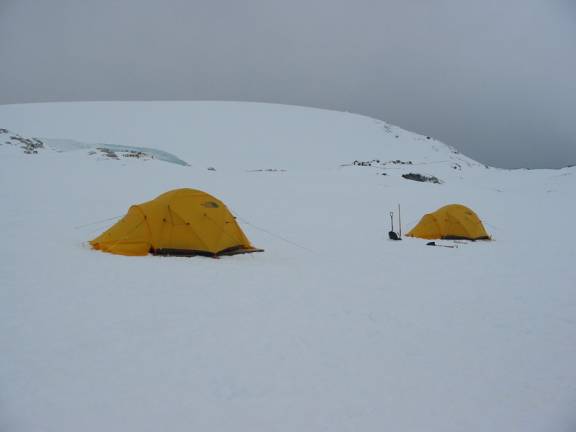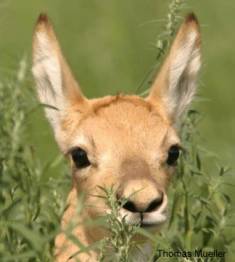Bill Fagan
Distiguished University Professor,
Department of Biology, University of Maryland
Ph.D., 1996, University of Washington
| Address: | 3235 Biology-Psychology Building University of Maryland College Park, MD 20742 |
| Phone: | 301-405-4672 |
Honors and Awards
Research
My research involves meshing field research with theoretical models to address critical questions in community ecology and conservation biology. I believe that ecological theory will be strengthened if it is forced to help solve real-world problems, and that conservation biology involves difficult choices that demand quantitative approaches.
Several ongoing research areas illustrate this melding of theory and problem solving:
Spatial Ecology
To understand the complex ecological consequences of habitat fragmentation, I combine mathematical theory with empirical databases and/or field experiments to explore how landscape heterogeneity and patchiness can influence population and community dynamics. My interests in this area are diverse, including such issues as spatial subsidies, species' home ranges and migratory movements, spatial aspects of successional change, and edge-mediated effects. Ultimately, I'm interested in how spatial effects influence the assembly, collapse, and functioning of ecological systems, and I try to understand these relationships by working at the interface of data and theory. Research on this topic involves field work in some amazing parts of the world, including the Eastern Steppes of Mongolia, the Antarctic Peninsula, and the starkly beautiful Pumice Plains of Mt. St. Helens, Washington.
Funded Research Projects:
National Science Foundation - Mathematical Biology: "Modeling animal dispersal: Linking the real to the ideal." Collaborative with mathematicians Steve Cantrell and Chris Cosner, this grant supports bridge building between empirical studies of animal movement and mathematical models of movement. For example, we are exploring models in which animals 'switch' between different kinds of movement behavior as a function of spatial context. See Fagan et al. 2019. Theoretical Ecology for an example.
NSF Advances in Biological Informatics: "Informatics tools for population-level animal movements." with T. Mueller, P. Leimgruber, A. Royle, and J. Calabrese. Thomas Mueller, an Assistant Research Scientist in my lab, leads this project. Also on this grant, my PhD student Justin Calabrese, now a researcher at the Smithsonian, and postdoc Chris Fleming have led development of a physics-based approach to animal foraging and statistical issues associated with empirical data on animal movements. Leveraging the powerful mathematical formalism of non-Markovian stochastic processes, this project is developing innovative data management and analysis tools that will allow scientists and conservation managers to use animal relocation and tracking data to study movement processes at the population-level, focusing on the interrelationship of multiple moving individuals. We are developing and testing these new tools using datasets on Mongolian gazelles, whooping cranes, and blacktip sharks. Our work on whooping crane migration appeared on the cover of Science in August 2013. More information is available on the Movement Dynamics Homepage.
Department of Defense MURI: "Understanding the Skin Microbiome Through the Integration of Metagenomics, Bioinformatics, Spatial Ecology and Synthetic Biology." This project, subcontracted through Johns Hopkins University, seeks to understand how different species of microbes coexist on human skin. Postdoc / Lab Manager Sharon Bewick leads our efforts using PDE and IDE models
NSF Mathematical Biology. (2012-2015) Collaborative Research: Spatial Spread of Stage-structured Populations. (PI: W. Fagan). This project, which is a collaboration with Bingtuan Li of the University of Louisville, focuses on building mathematical models of invasive species dynamics. Some of these models are purely theoretical in nature, while others link to real field systems. Postdoc / Lab Manager Sharon Bewick has led these efforts, which have also benefitted from the efforts of several undergraduate students (including Akira Horiguchi, who was honored as an 2014 Undergraduate Researcher of the Year by the University of Maryland) and postdoctoral mentee Joy Zhou, who is based at Ohio State University's Mathematical Biosciences Institute.
NSF LTREB: "Collaborative Research: Impacts of Insect Herbivory on the Pace and Pattern of Successional Change at Mount St. Helens" with John Bishop and Charlie Crisafulli. My PhD students Chris Che-Castaldo and Elise Larsen are working on this project. We are focusing on the ways insect herbivores are influencing the ecological recovery of the volcano Mount St. Helens through their impacts on early colonizing plant species (lupines and willows). Previous work by my collaborators and I on the spatial dynamics of recovery at Mount St. Helens was recognized with the Presidential Award from the American Society of Naturalists. More information is available on the Mount St. Helens Research Portal.
NSF Population Biology: "Collaborative Research: QEIB: Resource Predictability and Dispersal Strategies in Ungulates: Does Temporal Uncertainty Lead to Nomadism?" with Todd Fuller and Peter Leimgruber. My former PhD student Thomas Mueller worked on this project. We used a combination of field studies (satellite collars on Mongolian gazelles) and computational modeling (individual-based neural-network genetic algorithm models) to explore the spatial factors that influence the evolution and persistence of home ranges, nomadism, and migratory movements across taxa.
James S. McDonnell Foundation: "A Complex System Perspective of Transport in River Networks: Implications for Biodiversity and Water-borne Diseases." with Ignacio Rodriguez-Iturbe. My postdoc Heather Lynch and my lab associate Evan Grant contributed to aspects of this project. This project focused on the ways in which the branching geometry of river networks (as opposed to '2-D' planar landscapes) influences population dynamics, species interactions, and biogeography.
NSF Antarctic Research: Collaborative Research: Multispecies, Multiscale Investigations of Longterm Changes in Penguin & Seabird Populations on the Antarctic Peninsula. My postdoc Heather Lynch was in charge of this project, and several graduate students in my lab traveled to Antarctica each year as part of the effort. My graduate student Paula Casanovas pursued a dissertation on related topics involving Antarctic lichens. We compiled a biodiversity monitoring database for the Antarctic Peninsula that we then used to evaluate alternative hypotheses for long-term changes in penguin and seabird population sizes. The Oceanites Foundation and NASA provided additional support for this project.
Ecoinformatics, biodiversity databases, and conservation planning
To strengthen the science of conservation biology, I work to devise a) quantitative methods for extracting useful biodiversity data from minimalist data sets, and b) mathematical models that assess the adequacy of conservation goals by focusing on the regional dynamics of archetypal, indicator species. An often forgotten key to such models is that they be simple enough that the appropriate data can actually be collected in the field. My interests in the science of conservation are diverse, and I have been involved in projects ranging from reserve planning, to spatial analyses of extinction risk in desert fishes, to time-series analyses of extinction risk, to reviews of endangered species recovery plans. In 2001, I received a Guggenheim Fellowship for support of my research in these areas for a project entitled: "The Weak Data Problem in Conservation Biology."
Funded Research Projects:
National Science Foundation - Infrastructure Innovation for Biological Research: "Data integration to improve population distribution estimation with animal tracking data." Collaborative with Justin Calabrese, Dan Sheldon, and Roland Kays this grant supports development of a formal data integration framework that combines animal presence, presence-absence, and movement tracking data into a unified population distribution estimate (2019-2022)
NSF Advances in Biological Informatics: "Informatics tools for population-level animal movements." with T. Mueller, P. Leimgruber, A. Royle, and J. Calabrese. Thomas Mueller, an Assistant Research Scientist in my lab, leads this project. Also on this grant, my PhD student Justin Calabrese, now a researcher at the Smithsonian, and postdoc Chris Fleming have led development of a physics-based approach to animal foraging and statistical issues associated with empirical data on animal movements. Leveraging the powerful mathematical formalism of non-Markovian stochastic processes, this project is developing innovative data management and analysis tools that will allow scientists and conservation managers to use animal relocation and tracking data to study movement processes at the population-level, focusing on the interrelationship of multiple moving individuals. We are developing and testing these new tools using datasets on Mongolian gazelles, whooping cranes, and blacktip sharks. Our work on whooping crane migration appeared on the cover of Science in August 2013.
Dept. of Defense SERDP: "An Ecoinformatic Approach to Quantifying Recovery Goals for Endangered Species" with Maile Neel. My postdocs Sharon Bewick, Yanthe Pearson, and Emma Goldberg and my PhD student Elise Larsen worked on this project. In this project, we used a database approach to study how conservation knowledge about well-studied species can be used to inform conservation efforts for lesser-known species.



